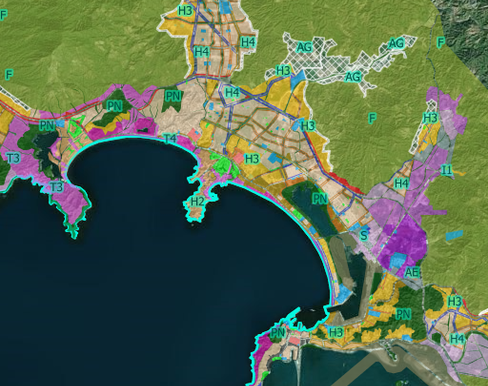Introduction of Mexican Urban Laws
In Mexico the urban laws each time are more important due to they regulate the order of growth
of city populations and physical construction, always taking account their impact to the environment
where it is placing it, as the goal is to have a systematic and functional distribution of the zones on
each State and municipalities, so it´s structure can facilitate the population it´s transportation, the
enjoyment of public services and a better development of human settlements, making them in the
most comfortable way to live in peace and harmony or at least intended to be that way in theory.
According each local place you will find certain particularities and way of living as each state has its
own characteristics economically and physically, and each administration every 3 and 6 years
(duration of the charge of federal and local Mexican authorities) according to those topics, has by
law, the obligation to create a development plan for different scopes that the administrations want
to materialize according their public politics. The urban development plan is one of the most
important ones, sometimes due to the complexity of the city or town rarely moves towards and
prefer to consolidate the structure of the urban development before all, because it presents some
difficulties or particularities that could affect more than benefit it if the urban limits move, so maybe
there would be situations where it shall pass years to move forward. Another important role is the
technical aspects, as the urban development plan requires expertise and study from people
specialized on these and more subjects.
Once that we have the important context of urban laws and the public policies and why they are
enacted, we can describe the Mexican urban laws as the several provisions that regulates topics
like; use of soil, construction, environment, sectorizing areas, human settlements, and else. These
impacts directly in the private property sector, as permits, bylaws, laws and development plans have
to be in accordance and are in all sights mandatory to all stakeholders, and that includes; public
administrations (federal and local), developers, architects, engineers, notaries, realtors, associations
of builders and public in general.
Human settlement laws and zoning bylaws are mainly local laws that focus on the order and use of
soil in municipalities in Mexico; in this case they set up economic zones; sectorize the industrial zone
in a particular area and near to them a section for mixing business and industrial areas (in a less
concentrated way), so gradually the home-site zones can be introduced in the urban space, and
where these ones are also sectorized by measures of property that goes to smaller size and more
dense in population to bigger size and less dense in population according to economic class, but still
there could be mixed home-site zones, as in the reality context happens to encounter several kinds
of developments and neighborhoods in a few steps nearby. Also, these laws impact directly in the
construction aspects, as sizes and requirements for construction of new developments erupts
according zoning as environment and nature, always play an important role due to the encounter
of land and water features limits and continuation of the urban public services (water, power,
sewerage, garbage collection, transportation, etc) and human settlements face time to time.
Thats why is important to review all those aspects when you are approaching to invest in
new developments, new condominiums or urban sites (piece of land), and have to count with all the
feasibilities to proceed and avoid any situation where the development or construction is at risk to
be suspended or cancelled if present unlawful situations.
For more contact F-Lex
